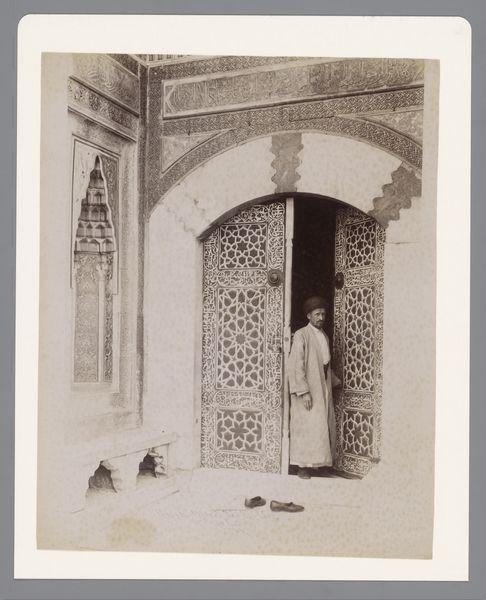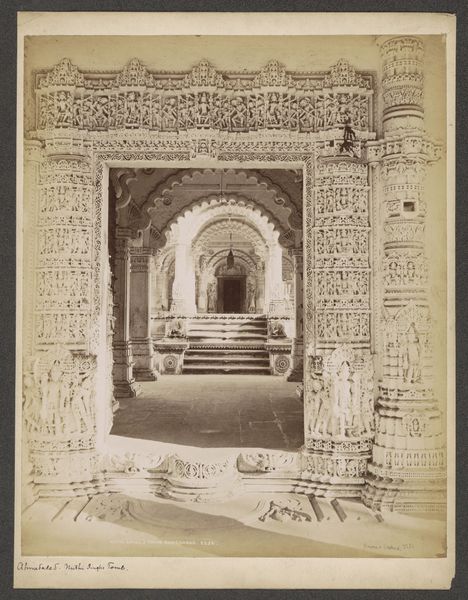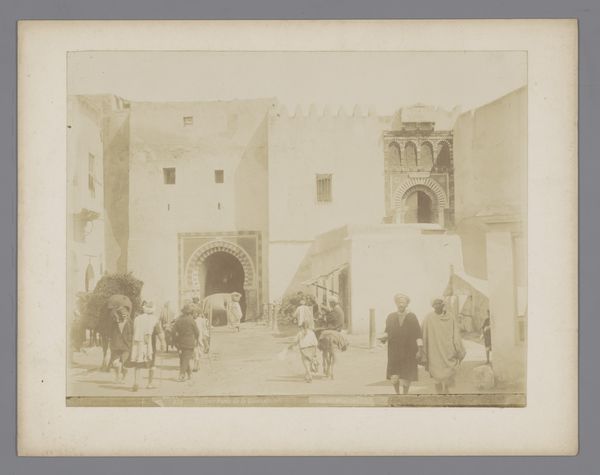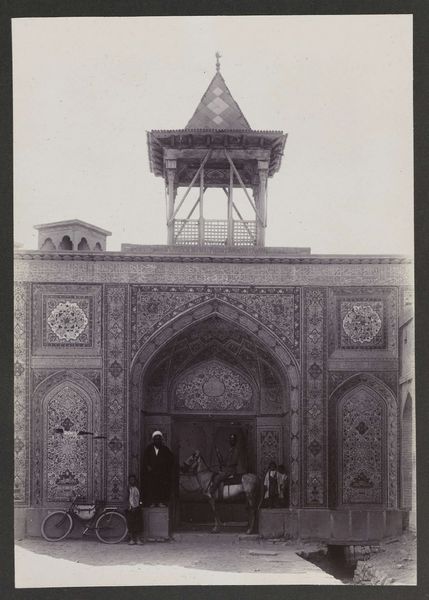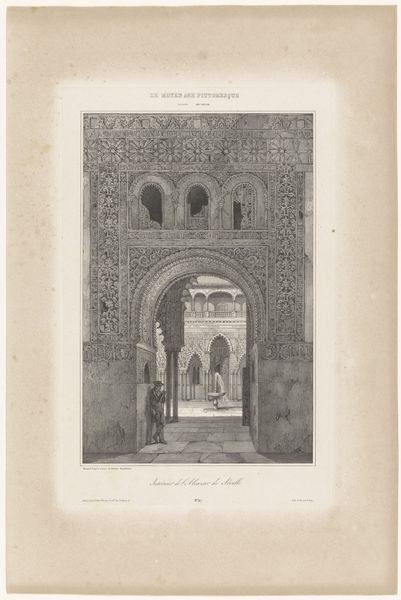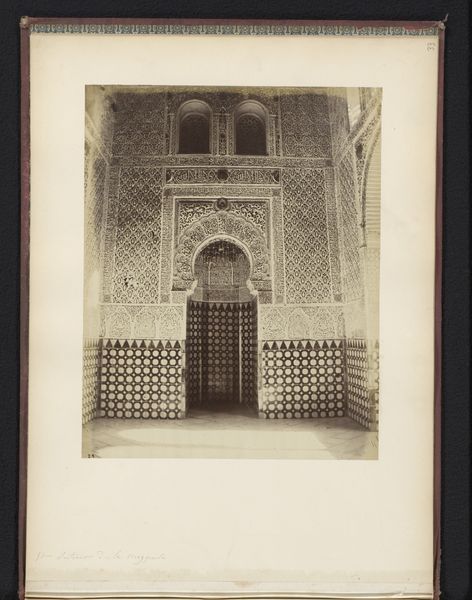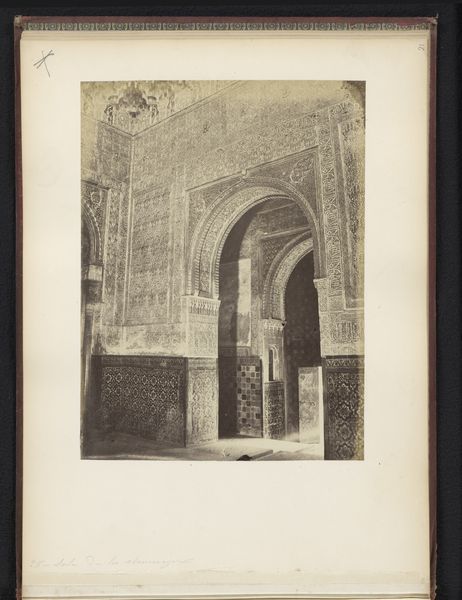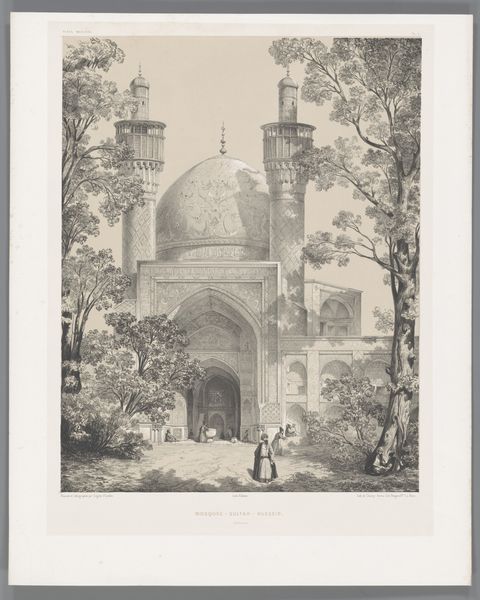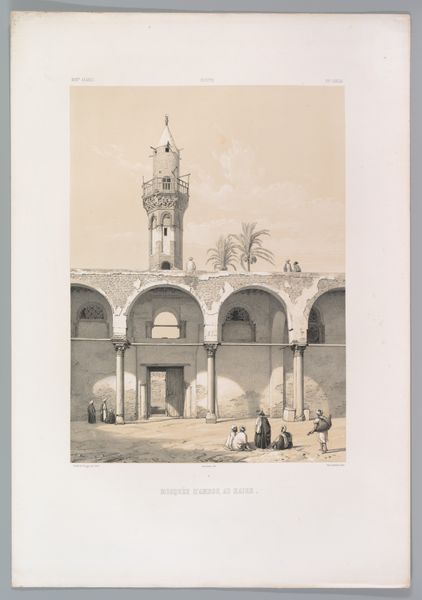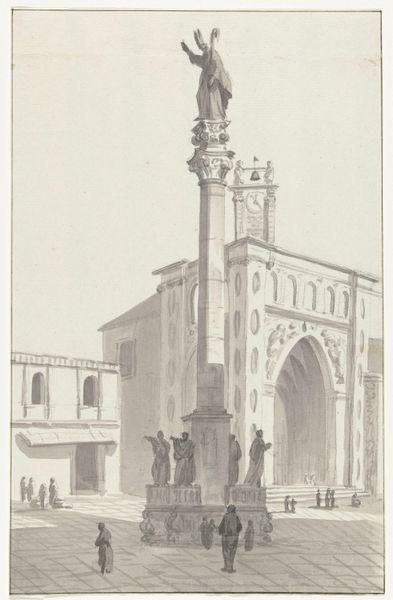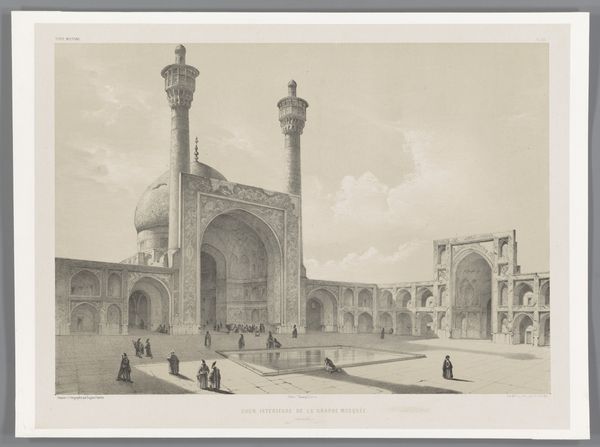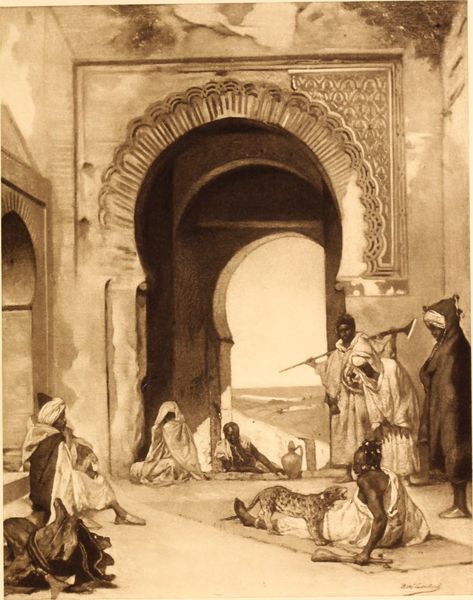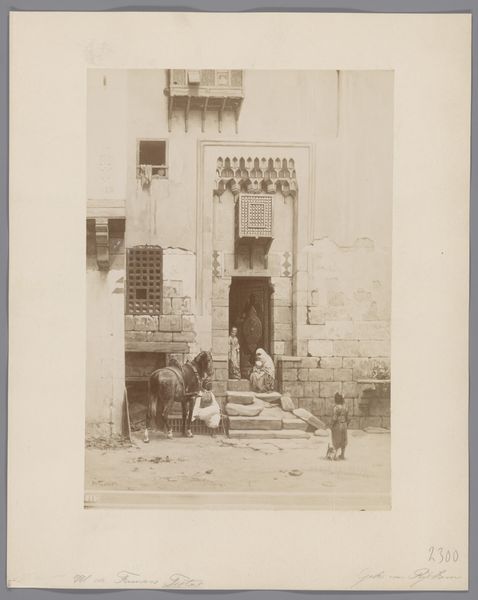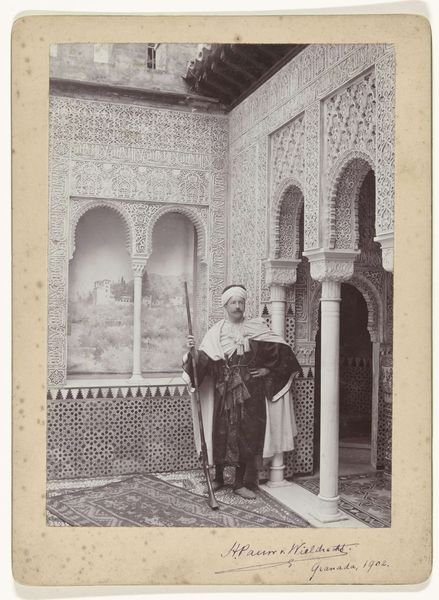
painting, watercolor, architecture
#
portrait
#
painting
#
landscape
#
watercolor
#
orientalism
#
cityscape
#
islamic-art
#
genre-painting
#
architecture
Copyright: Public Domain: Artvee
Curator: This watercolor painting by David Roberts, made between 1846 and 1849, is titled "Modern mansion, showing the arabesque architecture of Cairo." Editor: My first impression is of serene observation—it feels like a candid snapshot, a quiet moment observed from afar. The pale hues lend it an air of almost detached stillness, doesn't it? Curator: Absolutely. The way Roberts meticulously captures the details of the architecture speaks to the craftsmanship involved. Look at the geometric patterns adorning the facade, the intricate woodwork of the Mashrabiya. These are signs of specific labor practices and the availability of materials. The economic investment alone in constructing something so ornate indicates power dynamics at play. Editor: Indeed. The scene presents a particular Orientalist gaze, doesn’t it? It captures a seemingly timeless tableau of men in traditional garb engaged in leisure—while eliding the realities of colonialism and power. What kind of labor underpins this apparent idyll, and for whose benefit? And who does this benefit back in the UK when viewing it in an exhibition? The gaze in the image implies complex socioeconomic stratifications within Cairo at this time. Curator: Precisely. The painting offers insights into the material culture of the period, not just through the architecture but through the clothing of the figures—the types of fabrics used, the styles worn, the likely networks of trade in cotton, dyes and textiles which underpinned such local craft. These weren't incidental things; they were part of a network connecting Britain and Egypt to other colonial contexts. Editor: Yes, and thinking about this from a postcolonial lens allows us to recognize the ways in which representations like this one reinforce stereotypes, perpetuating a romanticized view of the "Orient" while masking underlying power dynamics. I also see this being a possible comment about Islamic patriarchy and class privilege with its emphasis on male subjects and architecture as a demonstration of socioeconomic dominance. What kind of class consciousness can we assign to this art, or better, whose class values does this emphasize and what does it exclude? Curator: Thinking about these complexities allows for an enhanced and critical encounter with this image. Instead of a pure aesthetic consumption, one asks critical questions. Editor: Definitely. Considering this artwork today calls for recognizing that its beauty is intertwined with layered questions of social, political, and historical forces.
Comments
No comments
Be the first to comment and join the conversation on the ultimate creative platform.
